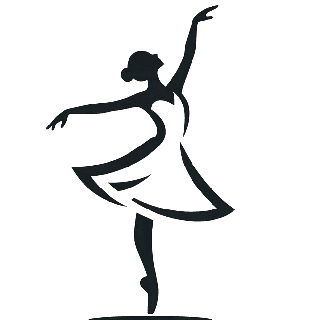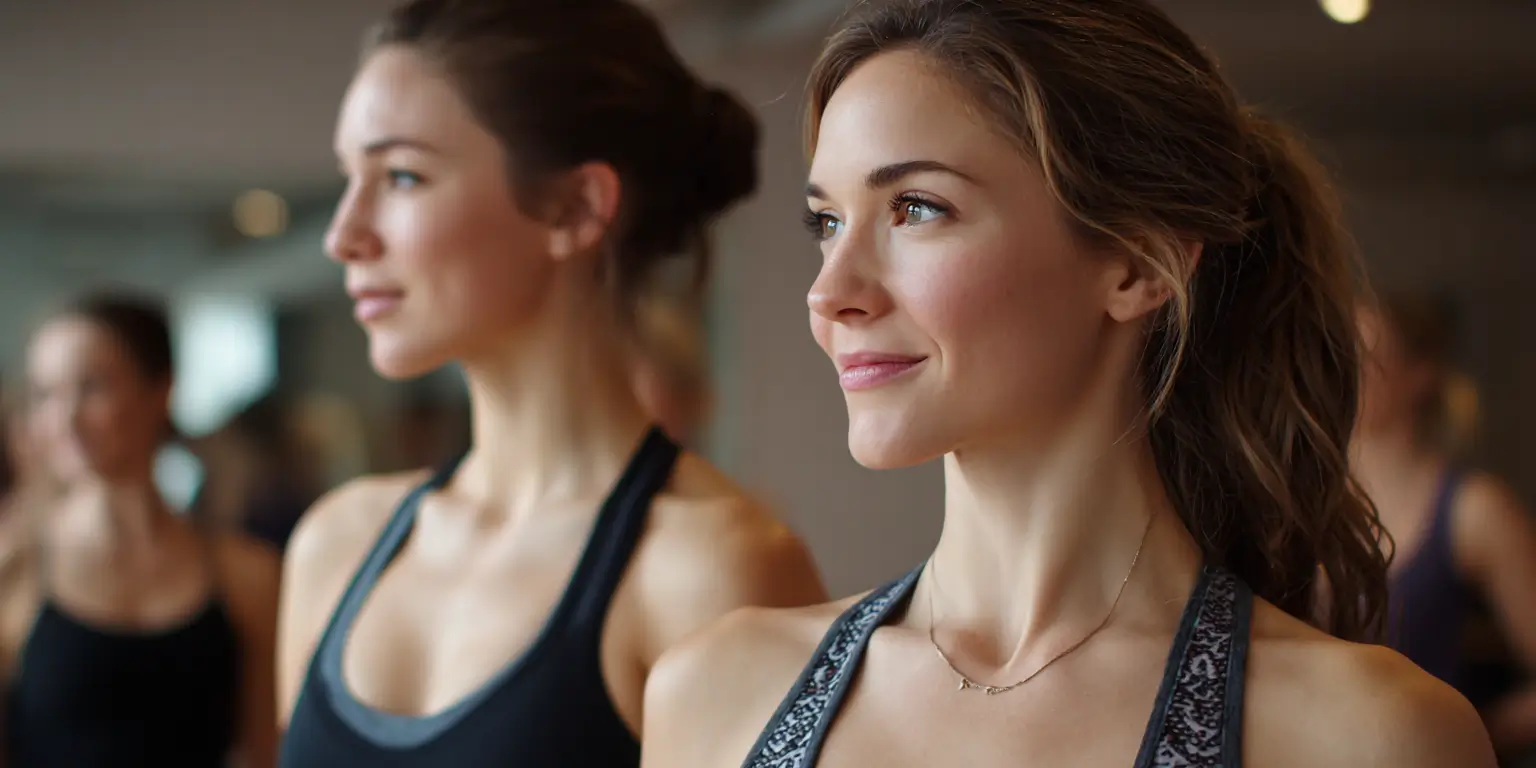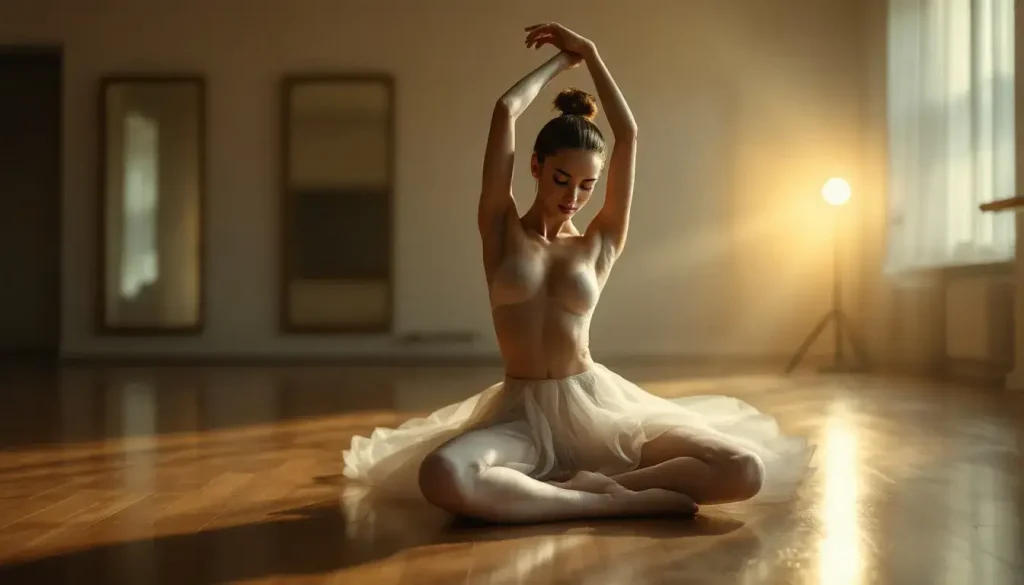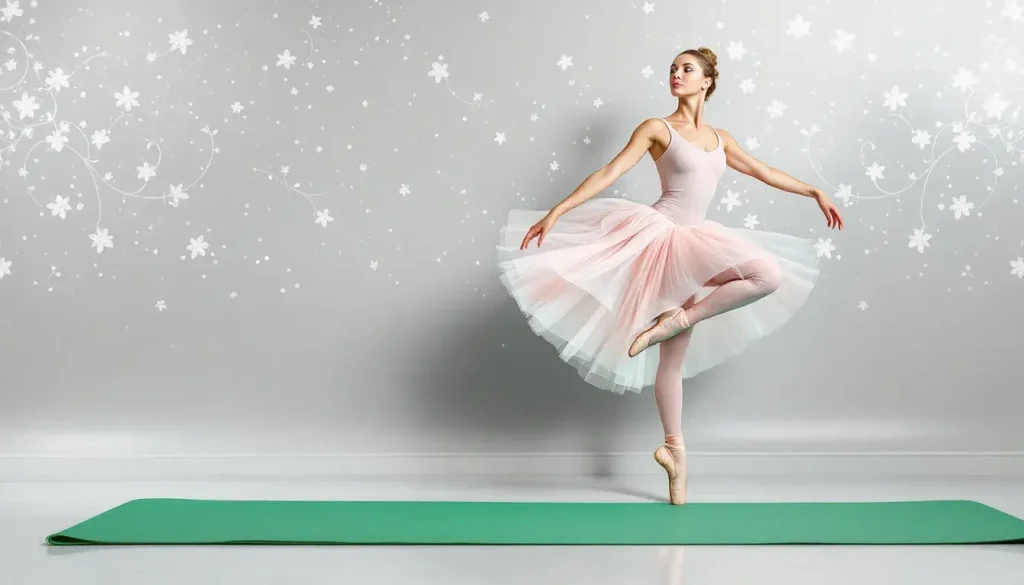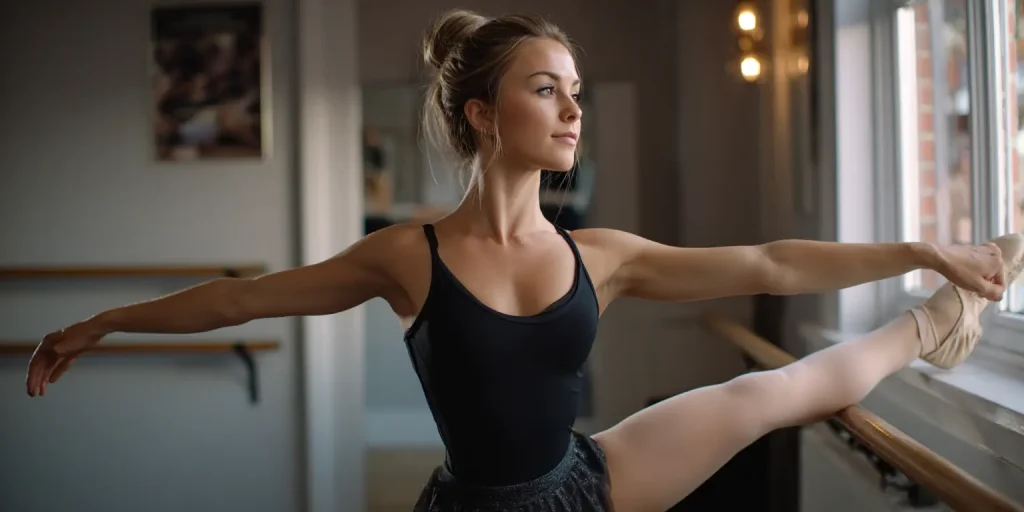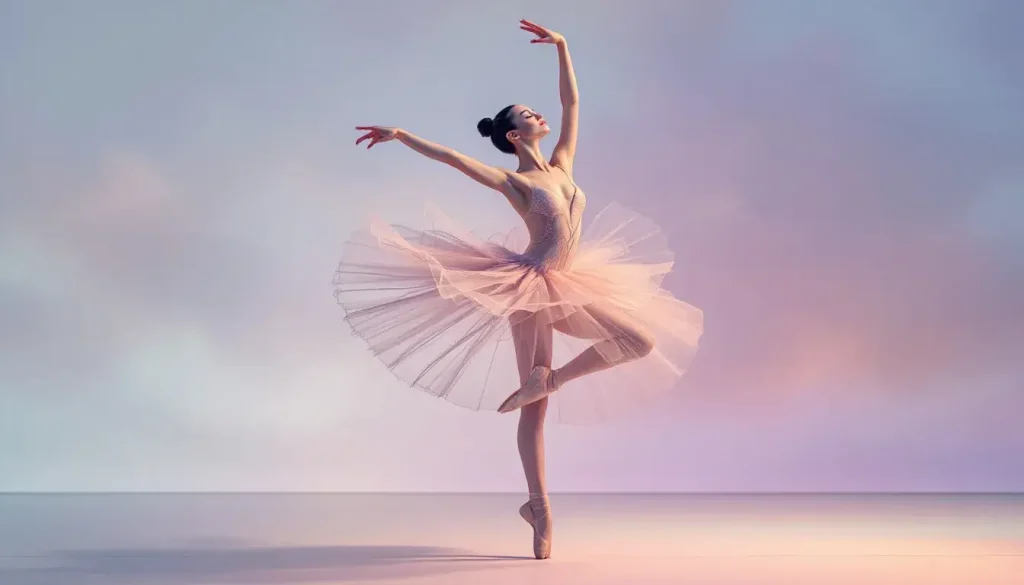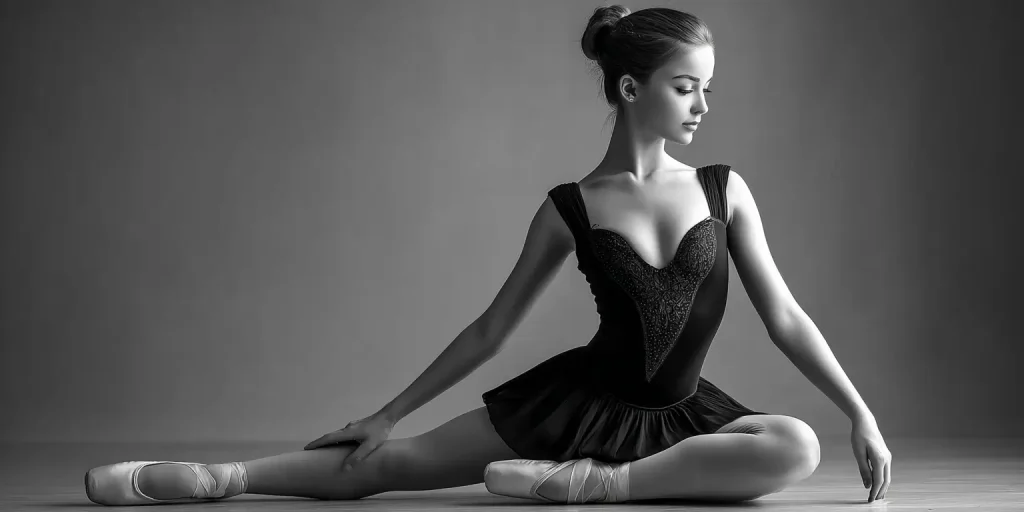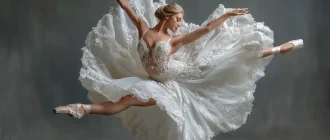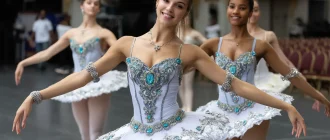Integrating ballet and pilates can enhance performance and help prevent injuries. Pilates improves body alignment and strength, which are key elements of ballet. This article explores the benefits and synergies of combining these two disciplines.
Graceful Insights
- Combining ballet and pilates enhances performance by improving core strength, body awareness, and recovery, leading to greater mastery of dance.
- Regular Pilates practice strengthens stabilizing muscles, improves flexibility, and promotes proper alignment, crucial for injury prevention in dancers.
- Beginner dancers should focus on foundational movements, choose the right footwear, and seek qualified instructors to build confidence and skills in both disciplines.
Podcast
The Synergy of Ballet and Pilates
The fusion of ballet and pilates creates a harmonious relationship that can significantly enhance a dancer’s performance. Pilates is renowned for improving body alignment, control, and strength, which is essential for executing ballet movements precisely. Incorporating pilates into ballet dancers’ training enables them to achieve a higher level of mastery in their art.
Both ballet and pilates emphasize the mind-body connection. This focus encourages practitioners to engage in mindful movements, controlled breathing, and concentrated effort, which can elevate their performance to new heights. The beauty of this synergy lies in its ability to bring out the best in both disciplines, making dancers more aware of their bodies and movements.
The benefits of combining these two practices extend beyond performance. Pilates helps recover, allowing dancers to bounce back more quickly from intense training sessions and performances. This holistic approach ensures dancers perform better, maintain their physical health, and extend their careers.
| Ballet Need | How Pilates Helps | Go-To Drill (fast cue) |
|---|---|---|
| Upright balance for pirouettes | Builds deep core control and axial alignment | Mat “Hundred” → hold neutral ribs/pelvis; finish with slow relevés |
| Clean turnout & knee tracking | Trains the hip external rotators and lateral line stability | Side-lying kicks/clam → knee over 2nd toe; slow return |
| High arabesque without back pain | Strengthens the posterior chain while protecting the lumbar spine | Swan → Swimming (mat) 6×10s; length, not hinge |
| Powerful, quiet jumps | Improves foot/ankle articulation and shock absorption | Reformer footwork → calf raises; silent landings practice |
| Port de bras endurance | Coordinates breath with scapular control | Arm circles on roller + “Chest expansion” (strap) |
| Pointe readiness | Intrinsic foot strength + calf endurance | Theraband demi-pointe presses → doming 3×12 each |
| Turnout stamina in adagio | Pelvic stability under slow load | Single-leg bridge (neutral pelvis) 3×8; finish with développés |
| Injury risk reduction | Addresses muscle imbalances; mobility + strength | Balanced program: spine articulation + hip stability circuit |
Sources: IADMS on Pilates as dancer cross-training and injury prevention; Harkness Center for Dance Injuries using pilates clinically; Cleveland Clinic on Pilates benefits (core, flexibility, balance, injury reduction); historical links between Joseph & Clara Pilates and NYC Ballet/leading dancers.
Core Principles Shared by Ballet and Pilates
At the heart of ballet and pilates lies a shared commitment to core strength and stability. A strong core is essential for executing ballet movements with precision and grace. Pilates exercises focus on deep abdominal engagement, enhancing core strength and providing the stability and support needed for various movements.
Body awareness is another crucial principle that both disciplines share. Pilates promotes greater body awareness, helping dancers identify and correct alignment issues affecting their technique. This heightened awareness leads to better posture, balance, and overall performance. The mindful movement emphasized in both practices encourages practitioners to be aware of their body mechanics and the quality of their movements.
Proper body alignment is vital in ballet and pilates. This focus on alignment ensures movements are executed accurately, reducing the risk of injury and enhancing overall performance. Dancers can develop the control and precision needed to excel in their art through regular practice.
Essential Equipment for Ballet and Pilates
Utilizing the right equipment is essential to getting the most out of ballet and pilates. Ballet barre stands provide support and stability during barre exercises, helping dancers maintain proper alignment and balance. A yoga mat is another essential piece of equipment, offering cushioning and grip for floor exercises, which is vital for comfort and stability.
Grippy socks with non-slip grips enhance balance and stability during workouts, making them a valuable addition to any dancer’s gear. Light weights, typically 1-3 pounds, build muscle and improve toning during exercises, adding an extra challenge to the workout that may involve one leg.
Resistance bands add resistance, increasing the difficulty of various exercises and aiding strength training. Each piece of equipment is crucial in supporting specific exercises, improving performance, and reducing the risk of injury. By incorporating these tools into their training, dancers can maximize the benefits of both ballet and pilates, ensuring a well-rounded, effective workout.
Strengthening and Conditioning
Strengthening and conditioning are paramount for ballet dancers, and pilates is an excellent tool for both. Incorporating pilates into their training enhances dancers’ core strength and stability, which are crucial for effective ballet movements. Pilates also helps strengthen the stabilizing muscles around joints, which is vital for preventing injuries.
Pilates exercises promote coordination by requiring controlled movements that integrate different muscle groups. This focus on a strong mind-body connection enhances awareness of body positioning, aiding in balance and overall control. Stability exercises incorporated into Pilates routines can significantly enhance dancers’ control and fluidity of movement.
Pilates’ standout benefit is its ability to enhance flexibility without compromising muscle strength. This balance is crucial for injury prevention in dancers, as it helps mitigate common overuse injuries by addressing muscle weaknesses and improving strength in underutilized muscles. Regular Pilates practice helps dancers build the strength, stamina, and flexibility needed to excel.
Enhancing Balance and Coordination
Combining ballet and pilates is a surefire way to enhance balance and coordination. Both disciplines encourage the development of core stability, vital for maintaining balance and control in movement. By integrating strength, flexibility, and body awareness, dancers can achieve a higher level of mastery in their art.
Specific exercises such as pliés and tendus in ballet, alongside balance-focused Pilates movements, are essential for honing coordination skills. These exercises require controlled breathing and mindful movement, which are key to maintaining stability and reducing the risk of falling. Through regular practice, dancers can enhance their balance and coordination, resulting in smoother, more graceful performances.
The combination of ballet and pilates improves physical abilities and fosters a deeper connection between the mind and body. This holistic approach ensures that dancers fully understand their movements, leading to better control and precision in their performances.
Improving Posture and Flexibility
Improving posture and flexibility is a fundamental goal for ballet dancers, and pilates plays a significant role in achieving this. Incorporating Pilates practices can improve flexibility, especially in muscles crucial to ballet, such as the hamstrings and hip flexors. Pilates exercises focus on controlled muscle elongation, promoting flexibility without compromising strength.
Barre exercises also include stretching components that promote flexibility and help maintain elongated muscles. This combination of improved flexibility and posture through pilates can enhance overall ballet performance by ensuring movements are executed correctly. Focused isometric movements in barre training engage smaller muscle groups that support spinal alignment and hip flexibility.
By regularly practicing pilates, dancers can achieve proper alignment and reduce muscle tension, leading to better posture and more fluid movements. This improved posture and flexibility enhance performance and the dancer’s long-term health and well-being.
Injury Prevention and Recovery
Injury prevention and recovery are critical components of a dancer’s training regimen, and pilates offers significant benefits in these areas. The low-impact nature of Pilates exercises helps prevent and rehabilitate injuries common in ballet. Pilates plays a vital role in preventing injuries by strengthening supporting muscles and improving joint stability.
Pilates also enhances balance by strengthening the core, which is crucial for stability during dance movements. This core stability supports efficient movement patterns, reducing the risk of back injuries and other common issues dancers face. The focus on proprioception in pilates enhances body awareness, allowing dancers to better control their movements and reduce the risk of injuries.
The controlled nature of Pilates movements supports the restoration of muscle function, a crucial factor for safe recovery in ballet dancers. By gradually rebuilding strength and flexibility after injuries, pilates helps dancers return to their practice safely and effectively. Regular Pilates practice can also improve a dancer’s turnout by strengthening the lower abdominal and back muscles, which are essential for this alignment.
What to Expect in a Combined Class
A typical class that merges ballet and pilates often begins with a warm-up to enhance flexibility and prepare the body for more rigorous movements. The structure of these classes generally blends traditional ballet movements with Pilates exercises to target strength and alignment. Expect a variety of exercises, including barre work, floor sequences, and stretching routines that integrate elements from both disciplines.
Instructors are crucial for guiding participants through movements and offering modifications to accommodate varying skill levels. The focus on core engagement and proper body alignment throughout the pilates session maximizes the benefits of both ballet and pilates. Both ballet and pilates instructors incorporate pilates.
The mindfulness aspect of pilates enhances the dancer’s focus and emotional expression, thereby improving the quality of ballet performance. Participants can expect a well-rounded workout that enhances their physical abilities and fosters a deeper connection between the mind and body. This holistic approach ensures that dancers leave the class feeling balanced, strong, and ready to take on new challenges.
Tips for Beginners
Beginners venturing into ballet and pilates should keep a few key tips in mind. Choosing the right footwear is crucial to ensure safety and proper exercise technique. Ballet slippers and grippy socks are highly recommended for support and stability.
Beginners should seek a qualified instructor to guide them through foundational movements and techniques. A knowledgeable teacher can provide personalized instruction and modifications to help beginners build a strong foundation. Starting with basic movements in ballet and pilates is essential for developing the skills and strength needed for more advanced practices.
By following these tips, beginners can confidently embark on their journey, knowing they are taking the right steps towards mastering these disciplines. With dedication and practice, they can enjoy the numerous benefits of ballet and pilates.
Resume
In summary, combining ballet and pilates creates a powerful synergy that enhances performance, improves posture, and helps prevent injuries. By focusing on core strength, body awareness, and proper alignment, dancers can achieve a higher level of mastery in their art. The essential equipment, strengthening and conditioning exercises, and tips for beginners provide a comprehensive guide for incorporating these practices into your routine.
As you embark on this journey, remember that ballet and pilates have benefits beyond the dance studio. This holistic approach fosters a deeper connection between the mind and body, promoting overall well-being and long-term health. So, take the first step towards unlocking your full potential and experiencing the transformative power of ballet and pilates.
